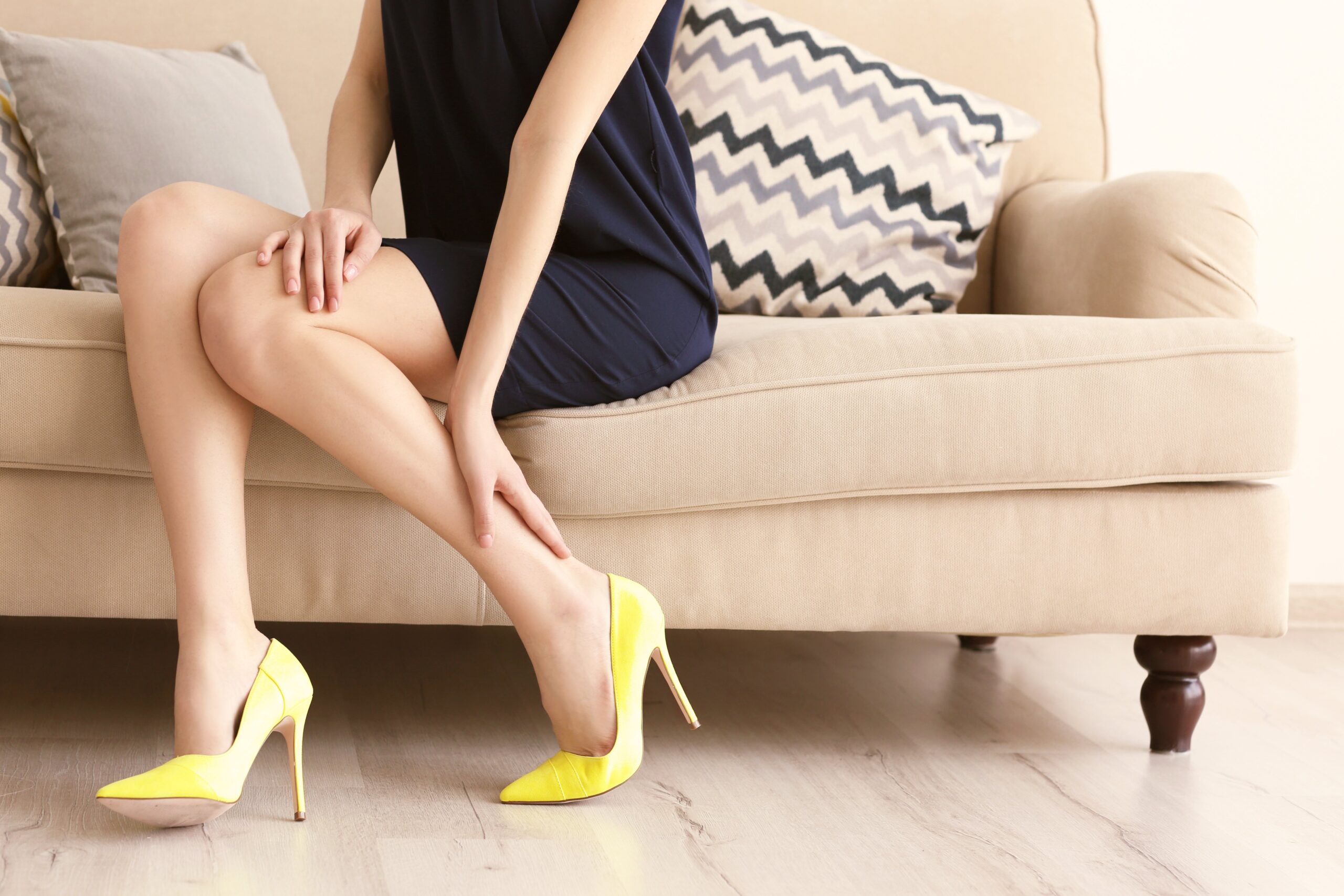High heels can be the perfect accessory that pulls an outfit together for work, date night, or a special occasion. While they might look fantastic and give you that extra boost, we all know heels are not the healthiest (or most comfortable!) footwear for our feet.
With these tips, though, you’ll learn about healthier ways to wear heels without putting your feet at risk.
What’s wrong with wearing high heels?
While heels can seemingly make or break an outfit, they can also have serious consequences for your hips, spine, knees, and muscles.
Forcing your body to adapt to walking on an unnaturally long point is going to undoubtedly change the way you move. In short, heels cause you to be off-balance and in order to compensate and stay upright, you bend your hips and spine forward.
Your calves, back, and hip muscles all tense up to keep balance. After a few hours of wearing heels, you’re probably used to that familiar ache – it’s your muscles becoming fatigued after being thrown out of balance by your heels. Additionally, it is thought that repeated and frequent heel wearing causes the calf muscles to cramp and bulge.
Towering stilettos put stress on your back and knees, as the rest of your body is forced forwards to retain balance. Frighteningly, the slippage of one vertebra forward can also occur in the lumbar region of the spine.
Longer-term problems also include poor spinal alignment, resulting in back and muscle pain.
It’s clear that repeated wearing of high heels may cause a host of problems, but what can you do if you don’t want to sacrifice your heel-wearing habits for good?
Wear chunkier heels
When possible, try to avoid those excessively tall, pointy heels. Instead, opt for chunkier heels like platforms and wedges.
Wedges are a great staple for all types of parties and events. Materials like cork are great choices for cushioning your feet as they are softer, unlike wood which puts more pressure on the soles of your feet.
More surface to stand on means that there’s less pressure put on your knees, which could help prevent lots of issues related to wearing heels. According to studies, women who wear heels when they’re younger often complain of knee pain when they’re older.
Look for straps
Try buying heels that come with some sort of strap. Providing extra support for your feet, straps ensure that there isn’t too much pressure on one area. They also stabilize your ankle, useful for avoiding ankle twists or embarrassing and painful falls.
Buy the right size
This sounds like an obvious one, but we’ve all been there — you’re in a store trying on your dream pair of shoes when it turns out there’s only one pair left and it’s a size too small. As tempting as it is to squeeze your feet into the shoe and brave the pinching pain from your new purchase, it’s not a good idea.
Wearing shoes that are too small for your feet will only add to the pressure already on your feet and probably cause minor injuries and discomfort like blisters and corns on your toes. Equally, buying heels in a size too big are likely to cause injury as you might trip.
While they might be your ideal pair of heels, if they pinch your feet or if you have oodles of space at your toes, leave them on the shelf, as you’ll save yourself a lot of pain in the long run.
Keep them under 3 inches
If heels are unavoidable or if you’re desperate to wear them with a certain outfit, try to keep them at three inches or less. Heels higher than this drastically increases the pressure on your foot. Keeping your heel height under three inches is a great way to compromise and keep wearing heels while making health a priority.
Take care of yourself
Regular exercise can help strengthen your feet, helping keep them safe when wearing heels. Try stretching before and after wearing heels to help strengthen and relax your muscles.
After a heel-wearing session, you can also try giving your feet a good massage to relieve tension.
Alternate the style of shoes you wear
Keep your heel-wearing habit to a minimum and make sure you don’t wear them every day. Mix up your footwear and try to wear flat, more supportive shoes that cushion your feet properly.
Wearing flats and more supportive trainer-style shoes is a great way to ensure your heel-wearing habit doesn’t cause too much damage.
Wear soft insoles
Putting insoles into your heeled shoes will help cushion your feet and put less pressure and strain on the surrounding muscles. When you put on your favorite heels, you’ll notice that they no longer hurt so much.
If you love wearing heels, there’s no reason why you should have to give them up. To avoid injury and any long-term damage, try some of the tips above and see that you can have the best of both worlds.
If you’re experiencing pain in your knees, hips, or back, you can schedule an appointment with one of our providers at Voyage Healthcare to find out the root of the problem and make sure you get back to feeling your best.